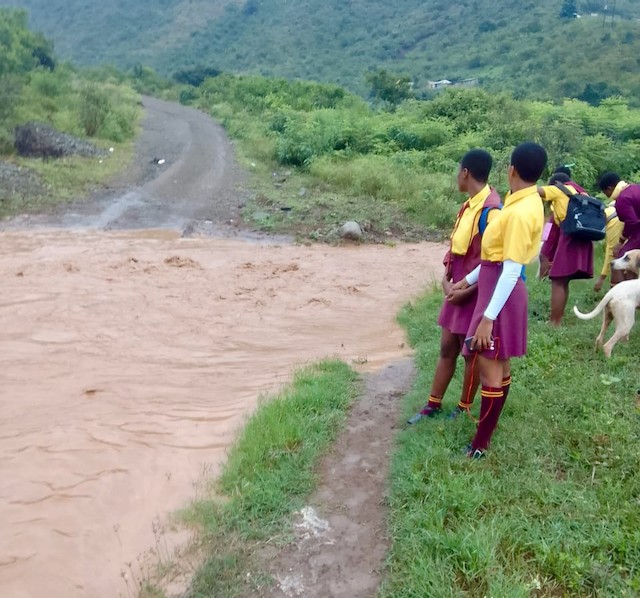KZN villagers get new bridges to cross dangerous rivers safely
After pleading with government for years, the Welisizwe Bridge Programme has finally delivered four bridges in eMakhabeleni
A bridge has been built across the Dimane River in eMakhabeleni, KwaZulu-Natal. For years villagers were cut off from schools and Kranskop town when the river was flowing. Photo: Nokulunga Majola
Villagers in eMakhabeleni, outside Kranskop in Mvoti, KwaZulu-Natal, no longer have to worry about getting to school and work in town by wading through overflowing rivers during the rainy season.
On Tuesday, public works and infrastructure Minister Sihle Zikalala officially handed over four bridges in the area. The bridges are part of government’s Welisizwe Bridges Programme, a collaboration between national public works, the National Defence Force (SANDF), and provincial transport departments. Their constuction in Skhova, Nophethu, Mandlalathi and in Dimane (which was finished a year ago) provided work for over 300 people.
One of the workers, Nonhlanhla Mtshali, said, “We learnt a lot. They were patient with us and I am happy to have been part of a project that also helped my community.”
In April 2022, GroundUp wrote about how the villagers were cut off from Kranskop town when the Dimane River was flowing, and children could not get to school.
Siphiwe Ngidi said, “For years, families had to carry coffins across the river because vehicles couldn’t cross. I am happy that is all behind us.”
A primary school governing body member, Sakhile Masikane, said, “Children were missing school when the river was full and some even missed their exams.”
He said there was still more to be done, such as fixing the road.
Ward 6 Councillor Sanele Makhaye (IFP) said, “The bridge is just the beginning; there is more that needs to be done.”
Last year, Minsiter Zikalala said the Welisizwe Bridges Programme will spend R1.1-billion annually, targeting rural provinces – the Eastern Cape (where the project was piloted), KwaZulu-Natal, Free State, Mpumalanga, Limpopo and the North West.
Each bridge construction site has seven defence force members to oversee the project, five artisans, and at least 40 expanded public works programme workers.
The Welisizwe programme is expected to deliver 100 bridges.
The Dimane River during heavy rains before the bridge was built. Archive Photo: Nokulunga Majola
Next: Google moves against notorious spam news website
Previous: Mystery surrounds Gauteng government’s multi-million rand adjudication panels
© 2024 GroundUp. This article is licensed under a Creative Commons Attribution-NoDerivatives 4.0 International License.
You may republish this article, so long as you credit the authors and GroundUp, and do not change the text. Please include a link back to the original article.
We put an invisible pixel in the article so that we can count traffic to republishers. All analytics tools are solely on our servers. We do not give our logs to any third party. Logs are deleted after two weeks. We do not use any IP address identifying information except to count regional traffic. We are solely interested in counting hits, not tracking users. If you republish, please do not delete the invisible pixel.




